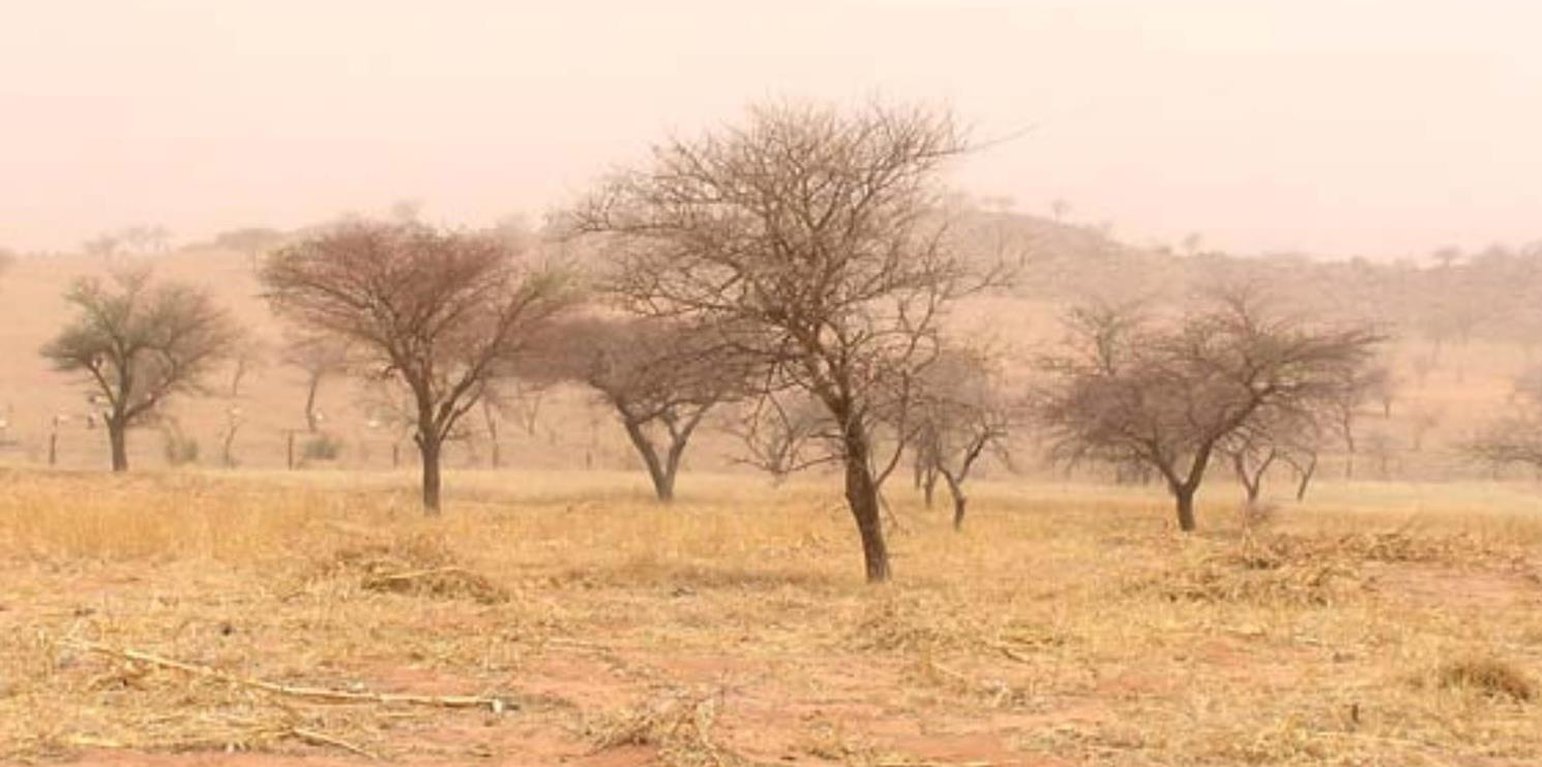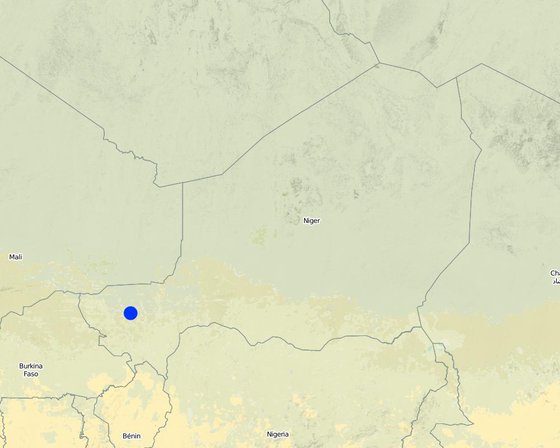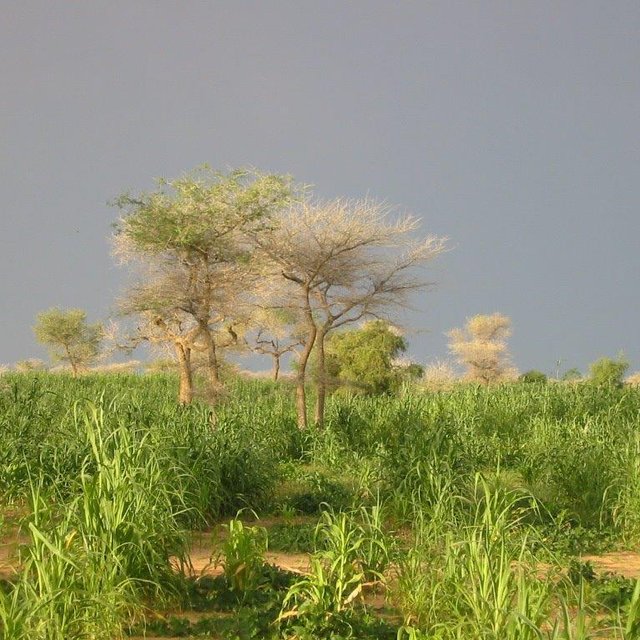



It involves selecting which natural tree seedlings to leave and placing a stake next to them to identify them. The recommended density on cropland is between 60 and 80 trees per hectare. ANR is carried out mainly on individual plots where monitoring and upkeep are easier.
Purpose of the Technology: Tree roots and fallen leaves help to stabilise the soil and thereby reduce water erosion. Some tree species have a fertilising effect on the soil. Legume species (for example, Faidherbia albida) enrich the soil with nitrogen. Other species circulate nutrients from the subsoil into the topsoil thanks to leaf fall. The shade provided by trees lowers soil temperature and reduces the evapotranspiration and thus water stress of plants. They also act as a windbreak and provide protection against wind erosion.
The environmental effect of ANR depends to a large extent on tree density. The reintegration of trees and shrubs into any ecosystem has positive ecological effects and improves and protects the soil. The vegetation provides shelter and forage for animals and contributes to biodiversity. Trees have positive effects on crop yields, when they do not compete with the crops for water. They also provide products and byproducts, such as wood, fruits, leaves, forage, ingredients for medicinal products, etc. Faidherbia albida, for example, has no leaves in the rainy season, which is beneficial for crops. In the dry season, it is green and provides sheltered places for animals to rest. Leaves that fall from this type of tree fertilise the soil. The wood, leaves, pods and fruits provided by trees in crop fields help the owners to meet their family’s needs during the lean season.
Establishment / maintenance activities and inputs: In order to implement this technique, there must be a very clear legal framework governing land tenure.
In order to ensure the success of this measure, it is important to protect the tree seedlings and saplings from browsing animals during the first few years. The young trees are pruned regularly to stimulate growth, so that they quickly achieve the height required to make them safe from browsing animals. The choice of tree species depends on the intentions of the farmers (browse for animals, sale of fruits or byproducts such as shea butter, dawa-dawa, medicinal products, etc.). The technique requires no investment, apart from the work involved, and can be implemented by any land owner.
Natural / human environment: The Sahel is a region where the population has always faced a high degree of climate variability, manifested both in terms of time (unexpected dry spells can occur during the rainy season) and in terms of space (rainfall can vary greatly from one area to another). The population is mainly composed of small farmers and livestock keepers.
Over the last two decades, the effects of climate change have exacerbated the already difficult conditions. Accord¬ing to projections made by climatologists, the Sahel will experience a rise in temperatures combined with highly variable rainfall and an increase in extreme weather events.
The Soil and Water conservation and rehabilitation techniques have helped people in the Sahel to manage their ecosystems more effectively and improve their productive land. As a result, communities are better prepared to cope with environmental changes (changes in the climate, land degradation, etc.) and the im¬pact of shocks, particularly droughts.

ສະຖານທີ່: Regions of Tillabéri, Filingué, Ouallam, Téra and Tahuoa, Niger, ໄນເຈີ
ຈໍານວນ ພື້ນທີ່ ທີ່ໃຊ້ ເຕັກໂນໂລຢີ ທີ່ໄດ້ວິເຄາະ:
ການແຜ່ກະຈາຍຂອງເຕັກໂນໂລຢີ: ແຜ່ຂະຫຍາຍຢ່າງໄວວາໃນພື້ນທີ່ (approx. 1,000-10,000 ກມ 2)
ຢູ່ໃນເຂດປ່າສະຫງວນທີ່ບໍ?:
ວັນທີຂອງການປະຕິບັດ: 10-50 ປີ ຜ່ານມາ
ປະເພດຂອງການນໍາສະເໜີ









The wood, leaves, pods and fruits provided by trees in crop fields help the owners to meet their family’s needs during the lean season. The trees help to improve soil fertility and protect against erosion